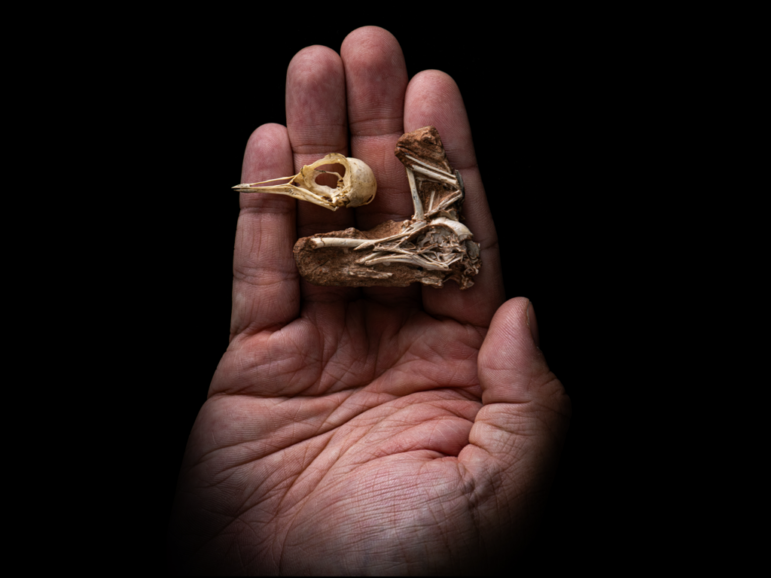The birds of today descended from the dinosaurs of yore. Researchers have known relatively little, however, about how the bird’s brain took shape over tens of millions of years.
“Birds are one of the most intelligent groups of living vertebrate animals,” says Daniel Field, a vertebrate biologist at the University of Cambridge. “They really rival mammals in terms of their relative brain size and the complexity of their behaviors, social interactions, breeding displays.”
Now, a newly discovered fossil provides the most complete glimpse to date of the brains of the ancestral birds that once flew above the dinosaurs. The species was named Navaornis hestiae, and it’s described in the journal Nature.
Piecing together how bird brains evolved has been a challenge. First, most of the fossil evidence dates back to tens of millions of years before the end of the Cretaceous period when dinosaurs went extinct and birds diversified.
In addition, the fossils of feathered dinosaurs that have turned up often have a key problem. “They’re beautiful, but they’re all like roadkill,” says Luis Chiappe, a paleontologist and curator at the Natural History Museum of Los Angeles County. “They’re all flattened and there are aspects that you’re never going to be able to recover from those fossils.”
The shape and three-dimensional structure of the brain are among those missing aspects.
But in 2016, Brazilian paleontologist William Nava discovered a remarkably well-preserved fossil in São Paulo state. It came from a prehistoric bird that fills in a crucial gap in understanding of how modern bird brains evolved.
The bird lived roughly 80 million years ago, some 10 to 20 million years before the dinosaur mass extinction event and tens of millions of years after Archaeopteryx, among the oldest bird-like dinosaurs, inhabited the Earth.
The newly discovered species is a “relatively small bird, something the size of between a pigeon and a starling,” says Chiappe. “It would have been an active flier, fully feathered.”
“You probably would recognize it as a strange bird,” adds Field. “It wouldn’t look too out of place in the present day except if you look carefully at its wings, you might see that it had pointy claws protruding from them.”
The bird’s skull “is strikingly modern looking,” says Chiappe. “It gives you a very good understanding of the cranial anatomy of these early birds.”
The researchers were able to CT scan this intact, delicate skull, allowing the team to digitally reconstruct the animal’s brain.
Some parts were more dinosaur-like. “For instance, the portion of the brain that in modern birds is responsible for helping coordinate flight called the cerebellum is not very well developed in this new fossil,” says Field. Instead, features of the inner ear are greatly expanded, suggesting it used an alternative means of coordinating balance and flight.
On the other hand, the cerebrum — the part of the brain associated with higher level cognition — was fairly big. It was much larger than that of the bird-like dinosaurs that came before and almost as large as modern birds.
“It tells us these sorts of transitional birds,” says Field. “They may well have been very clever and indeed much more clever than anything that had previously come before.”
Such cleverness would have likely helped these ancient birds find food or mates, he says. And more complex cognition could have supported a more complex social structure.

